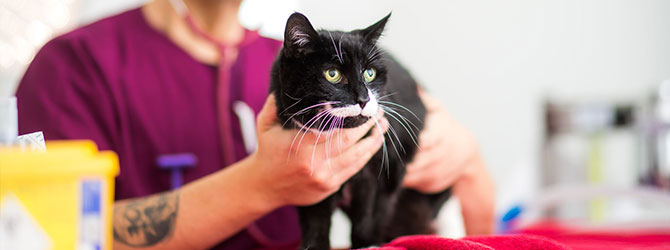Feline diabetes: managing diabetes in cats
Did you know that diabetes is becoming more and more common in UK cats?
Diabetes mellitus is a chronic condition that affects the way a cat’s body converts the food they eat into energy. It tends to affect middle-aged or older cats and in most cases it’s incurable - but that isn’t to say it can’t be managed successfully.
Let's take a look at what diabetes is, the signs to watch out for and what to do if you think your cat is suffering from diabetes.
A brief summary:
- Diabetes is a condition that stops the body from controlling blood sugar levels
- If untreated, diabetes can lead to further health problems
- Symptoms include increased hunger, thirst, urination and weight loss
- With insulin treatments and a healthy diet, diabetic cats can live long & healthy lives
- Contact your vet if you think your cat may have diabetes
Technically, what is diabetes?
To put it simply, if a cat is diabetic, it means their body is unable to control blood glucose levels, also known as blood sugar levels.
When a healthy, non-diabetic cat digests food, a type of sugar known as glucose is formed, which supplies the body with energy. Naturally, after a meal, the cat’s glucose levels rise. To prevent glucose levels from becoming too high, the cat’s pancreas produces a hormone called insulin which allows the body to process the glucose effectively.
In the case of diabetic cats, their pancreas does not produce enough insulin or their body can’t process insulin properly, which leaves excessive glucose circulating around the cat’s body. Meanwhile instead of sugars, the cat derives energy from fat or protein.
Diabetic cats run the risk of their blood sugar (glucose) levels becoming too high (hyperglycaemia) or too low (hypoglycaemia).
What causes it?
Diabetes is a common hormonal disease that can affect any cat. That said, cats are at a higher risk of developing diabetes if they are:
- Middle-aged or senior
- Overweight or obese
- Male
- On a particular type of long-term medication
There have also been studies to suggest that certain breeds are more susceptible than others.

How dangerous is diabetes?
Diabetes can cause increased thirst, hunger and urination. If left untreated, it can lead to a number of health problems including seizures, kidney failure, urinary tract infections and cataracts.
That said, diabetes is common - while there’s little in the way of a ‘cure’ per se, the condition can be treated very successfully. Many affected cats go on to lead long and happy lives.
Does my cat have it? What are the signs of diabetes in cats?
The excess glucose will draw water into the urine, making your cat go to the toilet more often. This will make them thirstier. Also, because the energy levels are not as consistent as they could be, your cat may feel hungrier too. Despite the extra eating, your cat may lose weight because their body isn’t using the dietary sugars effectively.
So, the following may be signs of diabetes:
- Increased thirst
- Increased urination
- Increased hunger
- Weakness/lethargy
- Weight loss
These symptoms may be signs of other health complications so if you spot any of them, be sure to contact your vet right away.
How do you treat diabetes?
Diabetic cats will need regular check-ups to monitor their condition, and you should always let your vet know immediately if you notice any changes to your cat’s weight, appetite, thirst, or if they appear dizzy at any time.
A diabetic cat will depend on insulin treatments for life, usually in the form of an injection administered 1-2 times a day. This may seem scary at first but don't worry - your vet will explain how to do it and will provide all the support you need. You’ll get the hang of it soon enough.

Can a healthy diet help control my cat’s symptoms?
A balanced diet, high in protein and low in carbohydrates, can massively improve your cat’s blood sugar levels. Your vet will advise you on feeding your cat and the best timing for meals and injections.
As with most conditions, the chances of managing diabetes effectively are a lot higher if the condition is diagnosed and treatment begins as early as possible. If you’re concerned about your cat, always contact your vet right away - it’s best to be on the safe side!
What’s the difference between Type 1 and Type 2 diabetes?
Type 1 diabetes is when the cat’s pancreas can’t produce insulin. Type 2 diabetes is when the pancreas produces insulin fine but the cells don’t respond to it properly.
In cats, Type 2 diabetes is far more common than Type 1. It’s thought that being overweight is a leading cause of both Type 1 and Type 2 diabetes, although several factors, lifestyle and otherwise, can predispose a cat to the condition.
Need more info?
For expert advice on diabetes in cats, have a chat with your local vet.
Locate your nearest My Family Vets practice using our Find a Vet page.

